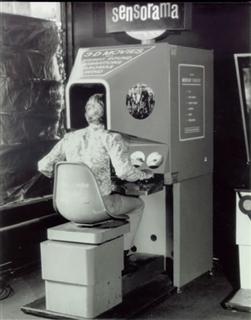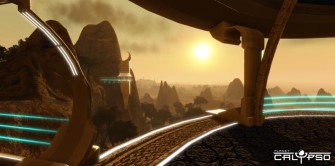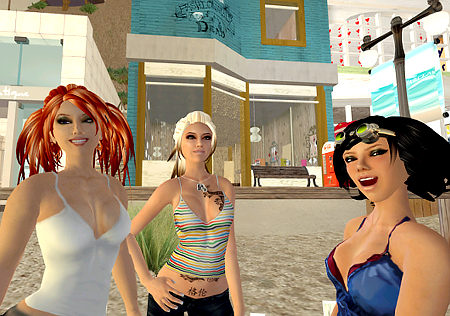
Second Life and the history of Virtual Worlds
The concept of virtual worlds is one that is not exclusive to the internet or, for that matter, to computers generally. Indeed, the Sensorama machine, which was engineered in 1962, created a rudimentary virtual reality experience that immersed the user in a stereoscopic 3D movie that incorporated body tilting, surround sound and smells. Without doubt, the Sensorama was ahead of its time and was therefore unable to secure the financial backing it required to become a success. However, the machine did provide a glimpse into the future of virtual worlds and, in many respects, a number of its key conceptual features have not been fully realised to this day.
Nevertheless, today`s virtual worlds belong to the internet, which means that they do not provide a virtual reality experience per se but instead create a new environment in which people from all over the world can interact. However, the very concept of virtual worlds is something that has shifted markedly throughout the history of computing and early machinery. Indeed, what can be defined as a virtual world is not always clear and is something that has evolved in tandem with technological advances. For instance, back in the days of the Sensorama machine, a virtual world was conceptualized as a medium through which a virtual reality environment could be experienced - it did not have a specific definition as such. During the 1970`s, however, various 2D and 3D gaming platforms revolutionized the way in which people identified a virtual world. The 2D text-based MUD (multi-user dungeon), for instance, allowed (and still does!) players to interact in fantasy role playing games via a TELNET command, whereas the 3D Maze War was a multi-user first person shooting game that introduced the concept of `avatars`, which are now fundamental to the definition of virtual worlds.

In fact, avatars, which are three dimensional computer generated representations of the human form, provide the vehicle through which the human operator can `exist` in the virtual world. In essence, therefore, the avatar is a fully customizable computer generated extension of the physical self. Without the avatar, a user is merely playing an online game - with the avatar, however, the user is plunged into the virtual world. Thus, a virtual world can be loosely defined as a massively multi-player online game that is rendered in 3D and features customizable avatars that can fully interact with other users or avatars and the surrounding environment. That environment, it is argued, must be online 24/7 and ought to have the capability to expand exponentially and in ways that are determined by its virtual inhabitants (the avatars or human users). Therefore, the virtual world is for all intents and purposes a `second life` of sorts.

Unsurprisingly, one of the leading virtual world environments had snapped up the name `Second Life` as soon as it could. Linden Lab was formed in 1999 and, just two years later, began development of the now world-famous Second Life virtual world platform. During this developmental period, Second Life featured a very different look and feel than it does today. Indeed, the platform adopted many of the traits associated with earlier virtual world games. In particular, Second Life focused very heavily on guns and the graphical movements of avatars, or `primitars` as they were then known, was comparatively unsophisticated. Nevertheless, on the 13th March 2002, the first Second Life resident - Steller Sunshine - joined Second Life, which would later be released in beta form to the public. Then, in June 2003, the full version of Second Life was released.
Initially only consisting of 16 regions, the Second Life grid adopted names taken from those belonging to streets in San Francisco. The Second Life population took a while to grow, as interest was met with a general confusion as to whether the virtual world was a game or something entirely different. Perhaps not even Linden Labs knew the direction that Second Life was heading at this point, as it was not until the end of 2003 that the virtual world was completely revolutionized. Indeed, the introduction of the Linden Dollar, which paved the way for currency exchange and a taxation system whereby residents have to pay a weekly fee for renting virtual land, ultimately created the Second Life world as it exists today. Nowadays, Second Life boasts the largest and most advanced 3D virtual world community, in which people exchange real cash (or the equivalent in Linden Dollars) for new lands, buildings, services, items, etc.
Indeed, land and items are often purchased for people in Second Life for birthdays, Christmas, etc. Nevertheless, it is reassuring to report that unique gifts can still be purchased in the real world, so there is perhaps no need to give up on the first life just yet.

| Requirements for functional equivalence to conscious processing? by DaltonG (General AI Discussion) |
| Will LLMs ever learn what is ... is? by HS (Future of AI) |
| Who's the AI? by frankinstien (Future of AI) |
| Project Acuitas by WriterOfMinds (General Project Discussion) |
| Ai improving AI by infurl (AI Programming) |
| Atronach's Eye by WriterOfMinds (Home Made Robots) |
| Running local AI models by spydaz (AI Programming) |
| Hi IM BAA---AAACK!! by MagnusWootton (Home Made Robots) |
| LLaMA2 Meta's chatbot released by spydaz (AI News ) |
| ollama and llama3 by spydaz (AI News ) |
| AI controlled F-16, for real! by frankinstien (AI News ) |
| Open AI GPT-4o - audio, vision, text combined reasoning by MikeB (AI News ) |
| OpenAI Speech-to-Speech Reasoning Demo by MikeB (AI News ) |
| Say good-bye to GPUs... by MikeB (AI News ) |
| Google Bard report by ivan.moony (AI News ) |
| Elon Musk's xAI Grok Chatbot by MikeB (AI News ) |
Most Online Today: 453. Most Online Ever: 2369 (November 21, 2020, 04:08:13 pm)
